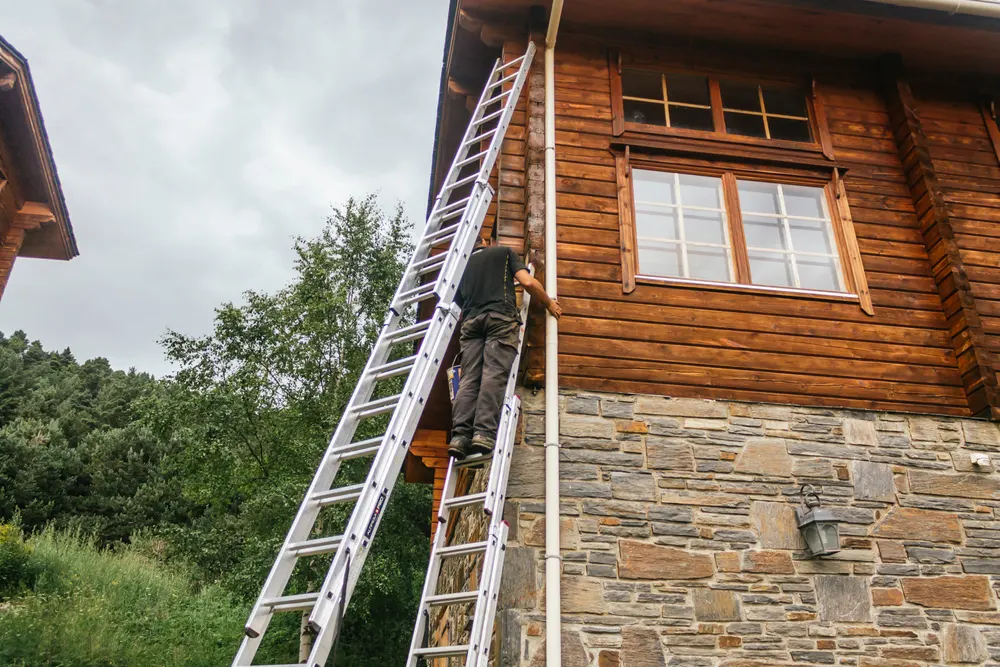If you are the proud owner of a log cabin or a log home, you are probably aware that it is not maintenance free. Log homes like other types of homes require regularly scheduled maintenance to protect it from the abuses of the elements. If you would like for your log home to survive being battered by the water, wind, and sun as well as last for many generations, it is important to take a consistent approach to maintenance.
Here are five important log home maintenance tips to keep you ahead.
1. Perform an Annual Log Home Inspection
The best time to perform the annual log home inspection is in the spring because any issues that are discovered can be easily corrected during the warm weather. The annual inspection can be fairly simple since all that it takes is for you to walk around outside your log house and examine the condition of your log walls closely. It is also important to inspect the log to window connections to ensure that they are tight.
2. Identify The Vulnerable Areas
It is important to pay particular attention to areas susceptible to water damage. Sensitive areas includes the logs set just above deck, or close to the ground, or stairway areas. These are areas that easily become wet and remain that way for extended periods. Water damaged logs are usually discolored compared to other wall logs. Other important areas to pay close attention to include logs around shrubs, bulk heads, and porches. Simply put, any logs that are exposed to water splash should be inspected then protected.
3. Plant Cautiously
Trees and shrubs that are allowed to grow too close to your log home can pose long-term problems. While such plants do offer protection from the sun, they also lead to problems with moisture. Plants that grow too close to your log home trap moisture, which can lead to mold and mildew problems. They can also prevent proper air circulation, which is needed for the logs to remain dry. It is due to this reason that you all plants should be at least 18 inches from the outer walls of your log home.
4. Stain On Demand
To determine whether your log home requires re-staining, you should spray the exterior walls with water from a garden hose. You should check whether water beads up on the walls. If it does, it means that the existing stain is still offering protection and keeping the logs dry. If you find that the logs absorb the water, the existing stain is no longer providing sufficient protection and it is time to reapply the stain.
It is not uncommon to find that the stain condition is not identical on all the sides of your house. West and South facing walls are likely to get more sun and typically require more regular maintenance than those that face East and North. Walls protected by covered porches are naturally sheltered and thus require less maintenance.
5. Caulking
While performing the inspection it is important to watch out for checks in the logs. Checks are the openings that run horizontally along the grain of the wood. Log checks should not be the cause for alarm since they are a natural part of the drying process. However, significant checks on the upward curve of the logs should be maintained.
Maintaining checks in log walls involves filling them using log home caulking. Before caulking, you can place backer rod into the check to improve the adhesion of caulk. Backer rod is a type of closed cell foam material sold in a variety of thicknesses. Since it is cheaper than caulk, placing foam into the check first helps to reduce the amount of caulking required to fill them. If you discover any insect holes during your inspection, you should treat them and caulk them too.
Final Thoughts
Preventative maintenance of your log home will save you money and time in the long run. It is always preferable to deal with issues while they are still minor before they grow into bigger and costlier problems. The corrective measures required for a poorly maintained home can be quite expensive. Follow the log home maintenance tips discussed here and your log home will serve you for a very long time.
